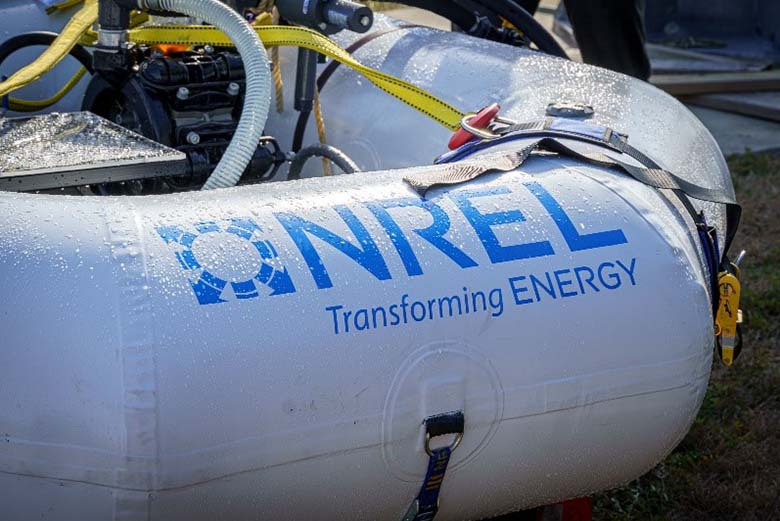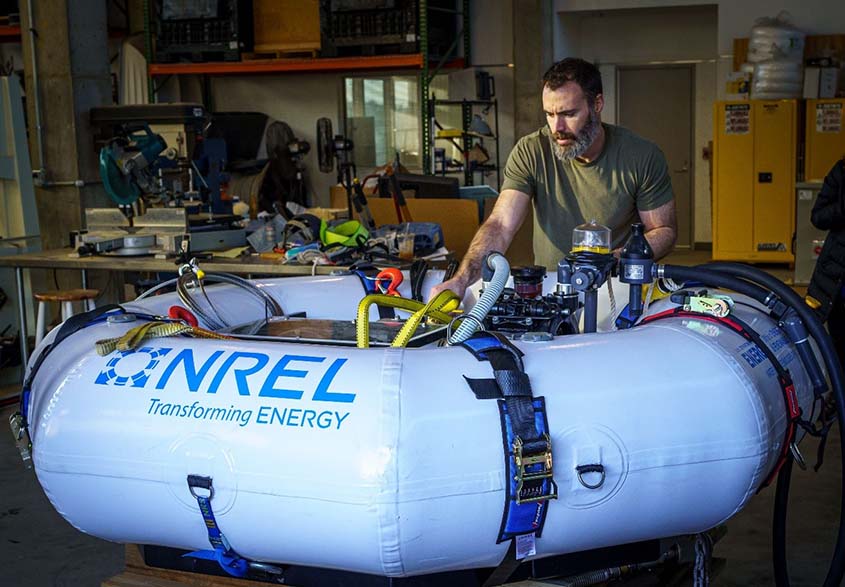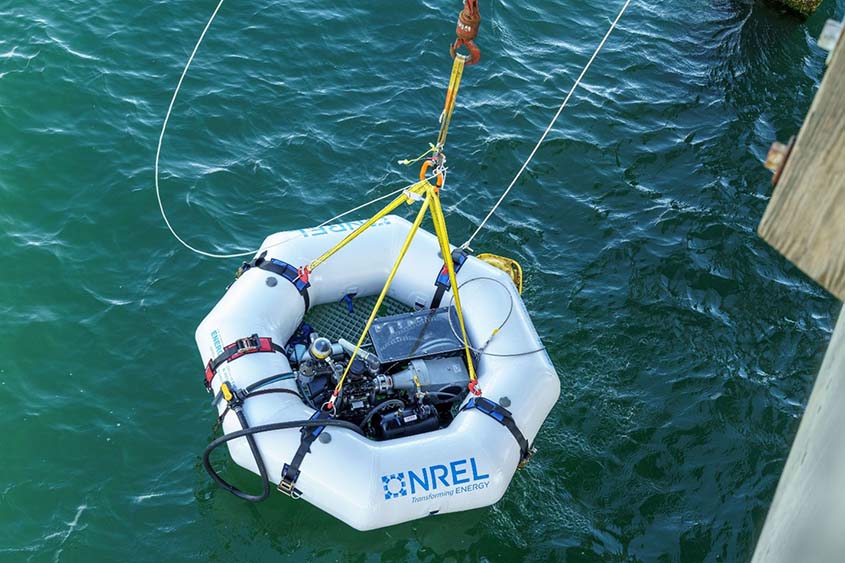Trial by Water: NREL's Wave-Powered Desalination Device Sets Sail

On a sun-filled winter day, National Renewable Energy Laboratory (NREL) researchers visited Jennette’s Pier, which sits on the shore of Nags Head beach in North Carolina. Amid salty air and crashing waves, the crew deployed a wave-powered desalination test device and anchored it to the nearby seabed—a long-awaited feat for the research team.
“Getting to this point has required a lot of patience and perseverance, but that's part of developing new renewable marine energy technologies,” said Scott Jenne, NREL’s marine energy systems engineering and techno-economic lead and principal investigator for the U.S. Department of Energy’s Waves to Water Prize. “Between building the device and finding a good-weather window in which to deploy, there were obstacles along the way, but we overcame those challenges and finally got the test device into the water.”

NREL researchers began designing the hydraulic and electric reverse osmosis (HERO) wave energy converter (WEC) device in summer 2020 and finished building it in January 2022. The team spent all of 2021 designing and constructing the HERO WEC, which is about 6 feet in diameter or roughly the size of a round dining table. After a year of facing unexpected supply-chain challenges, the team finally found a chance to test the device in the laboratory just before shipping it to North Carolina for ocean trials.
With help from the Coastal Studies Institute, NREL deployed the HERO WEC from Jennette’s Pier—the same location where Waves to Water Prize finalists will launch their wave-powered desalination prototypes. With the help of a spider crane, the 714-pound HERO WEC was hoisted over the pier’s railing, suspended about 2 feet above the water, and then swiftly dropped into the ocean. Experts at the Coastal Studies Institute then towed the device to its anchor site, where it was thoroughly secured overnight before being retrieved. The crew will run through the same motions with Waves to Water Prize competitors’ devices this spring; however, competitors’ prototypes will weather up to 5 days of in-water testing.

As NREL’s first marine-powered desalination device to weather real ocean waters, the HERO WEC deployment signals advancements for marine renewable energy and desalination technologies but also ensures a fair contest in the nearing Waves to Water Prize DRINK Finale, set to take place in April 2022. Supported by the U.S. Department of Energy’s Water Power Technologies Office and administered by NREL, the five-stage, $3.3 million contest aims to accelerate innovation in small, modular, wave-powered desalination systems capable of producing clean water in disaster and recovery scenarios, as well as in water-scarce coastal and islanded locations.
Since 2019, NREL researchers have been working closely with the Coastal Studies Institute and Jennette’s Pier to ensure that the DRINK Finale is a safe and fair competition. With the Waves to Water Prize guidelines in mind, NREL designed and built the HERO WEC device to help the entire crew better understand the competitors’ designs and installation requirements.
The HERO WEC gave both NREL and the Coastal Studies Institute a chance to deploy and retrieve a WEC device, which is exactly what the crew will do with competitors’ prototypes during the DRINK Finale. The practice run also gave researchers an idea of what to expect during finale testing, like tuning devices for various wave conditions and preparing for possible prototype repairs.
“With the crew knowing we can safely and successfully install these wave-powered desalination systems, we’re now fully prepared to help prize finalists get their wave-powered desalination prototypes in the water,” Jenne said.
The public is invited to join prize finalists in North Carolina’s Outer Banks for the long-awaited finale of the DRINK Stage, where competitors will demonstrate their wave-energy-powered desalination systems for the chance to win part of the $1 million cash prize pool. Starting in late March 2022, events, including device viewings, in-water testing, and celebratory activities, will take place over a 3-week period.
After the finale concludes, the NREL team hopes to deploy the HERO WEC device again in North Carolina’s Outer Banks. With a second outing later this year, the HERO WEC can spend more time in the water collecting data to further complete NREL’s research on small-scale WECs.
Learn more about the HERO WEC device.
Last Updated May 28, 2025
